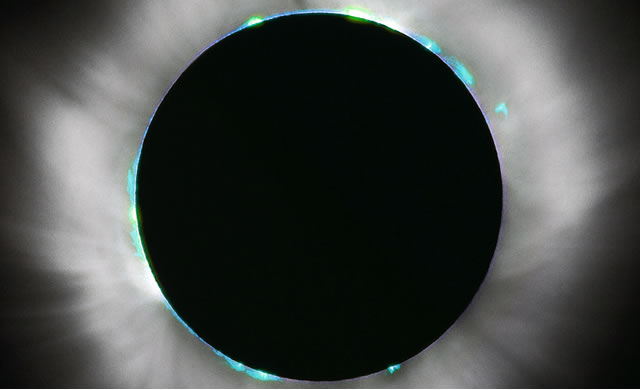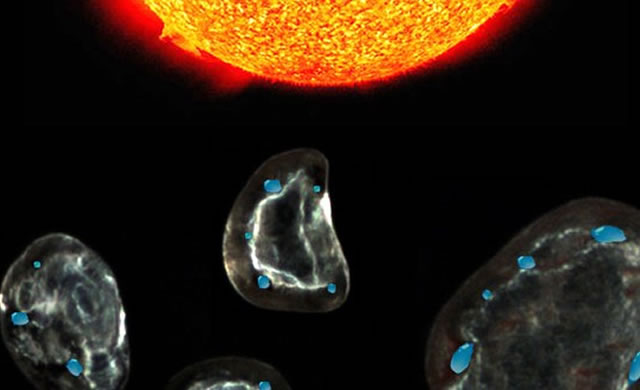
Il ghiaccio d’acqua è il materiale solido più abbondante nell’universo. Gran parte del ghiaccio presente nell’universo è stata creato come sottoprodotto della formazione stellare, ma non tutto. John Bradley del Lawrence Livermore National Laboratory e il suo team potrebbero aver scoperto una nuova fonte d’acqua nel nostro sistema solare. I suoi esperimenti di laboratorio rivelano che il vento solare potrebbe essere la sorgente per la creazione di acqua sulla polvere interplanetaria.
Il sole espelle ad alta velocità particelle cariche in tutte le direzioni. Corpi del sistema solare interno vengono bombardati da questo vento di particelle, che varia continuamente di intensità. Piccoli corpi, come le particelle di polvere o piccoli asteroidi, possono essere erosi da questi venti forti. Corpi più grandi che non hanno un’atmosfera, come la Luna, sono bombardati sia dal vento solare e da piccoli meteoriti. Questa forma di bombardamento provoca un fenomeno chiamato spazio atmosferico. ( Le atmosfere proteggono i pianeti dai piccoli meteoriti, mentre un campo magnetico può deviare i venti solari.) La polvere lunare riportata dalle missioni Apollo ha mostrato per la prima volta il risultato di questo fenomeno, anche se non immediatamente. Un attento esame della polvere tornata dalla superficie lunare ha dovuto attendere fino al 1990 quando gli strumenti scientifici sono diventati più sofisticati. Quando finalmente è stata osservata sotto microscopi sufficientemente potenti, le particelle di polvere hanno rivelato quello che tecnicamente vengono chiamati “cerchi”. Queste particelle di polvere sono solitamente composte di silicati, composti di silicio, ossigeno, idrogeno e pochi elementi metallici. I cerchi sono il risultato di una modificazione chimica della superficie della particella, provocati da urti ad alta energia e il bombardamento continuo del vento solare.
Water ice is the most abundant solid material in the universe. Much of it was created as the byproduct of star formation, but not all. John Bradley of Lawrence Livermore National Laboratory and his team may have discovered a new source of water in our solar system. His lab experiments reveal that the solar wind may be creating water on interplanetary dust.
The sun ejects high-speed charged particles in all directions. Bodies in the inner solar system get bombarded by this wind of particles, which continuously varies in intensity. Small bodies, such as dust particles or tiny asteroids, can be eroded by these harsh winds. Larger bodies that do not have an atmosphere, such as the Moon, are bombarded by both the solar wind and tiny meteorites. This form of bombardment causes a phenomenon called space weathering. (Atmospheres protect planets from tiny meteorites, while a magnetic field can deflect solar winds.) The lunar dust brought back by the Apollo missions showed for the first time the result of space weathering – though not immediately. A careful examination of the dust returned from the lunar surface had to wait until the 1990s when scientific instruments became good enough. When finally observed under sufficiently powerful microscopes, the dust particles revealed what have been called “rims.” These dust particles are usually made of silicates – compounds of silicon, oxygen, hydrogen and few metallic elements. The rims are the result of chemical modification of the surface of the particle, caused by high energy impacts and the continuous bombardment of the solar wind.

Source/Continue reading → Phys.org





















